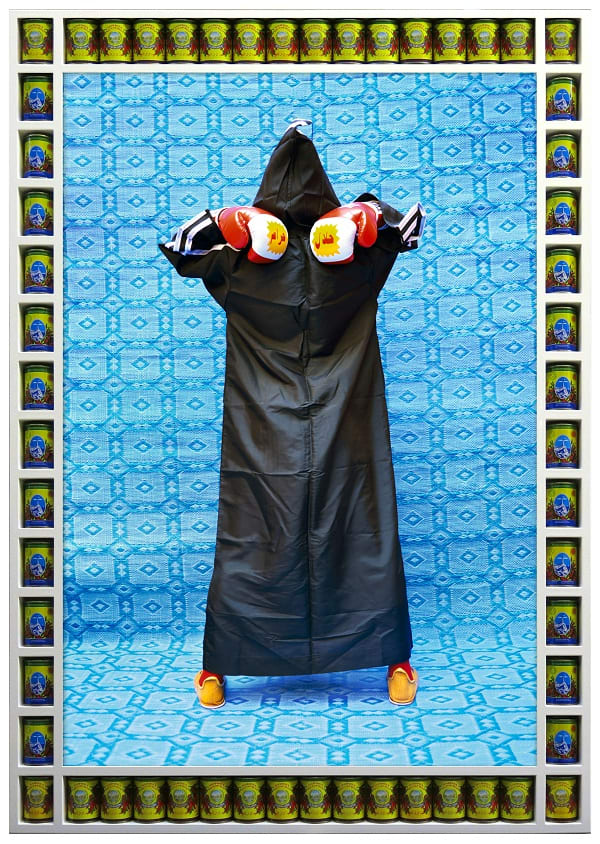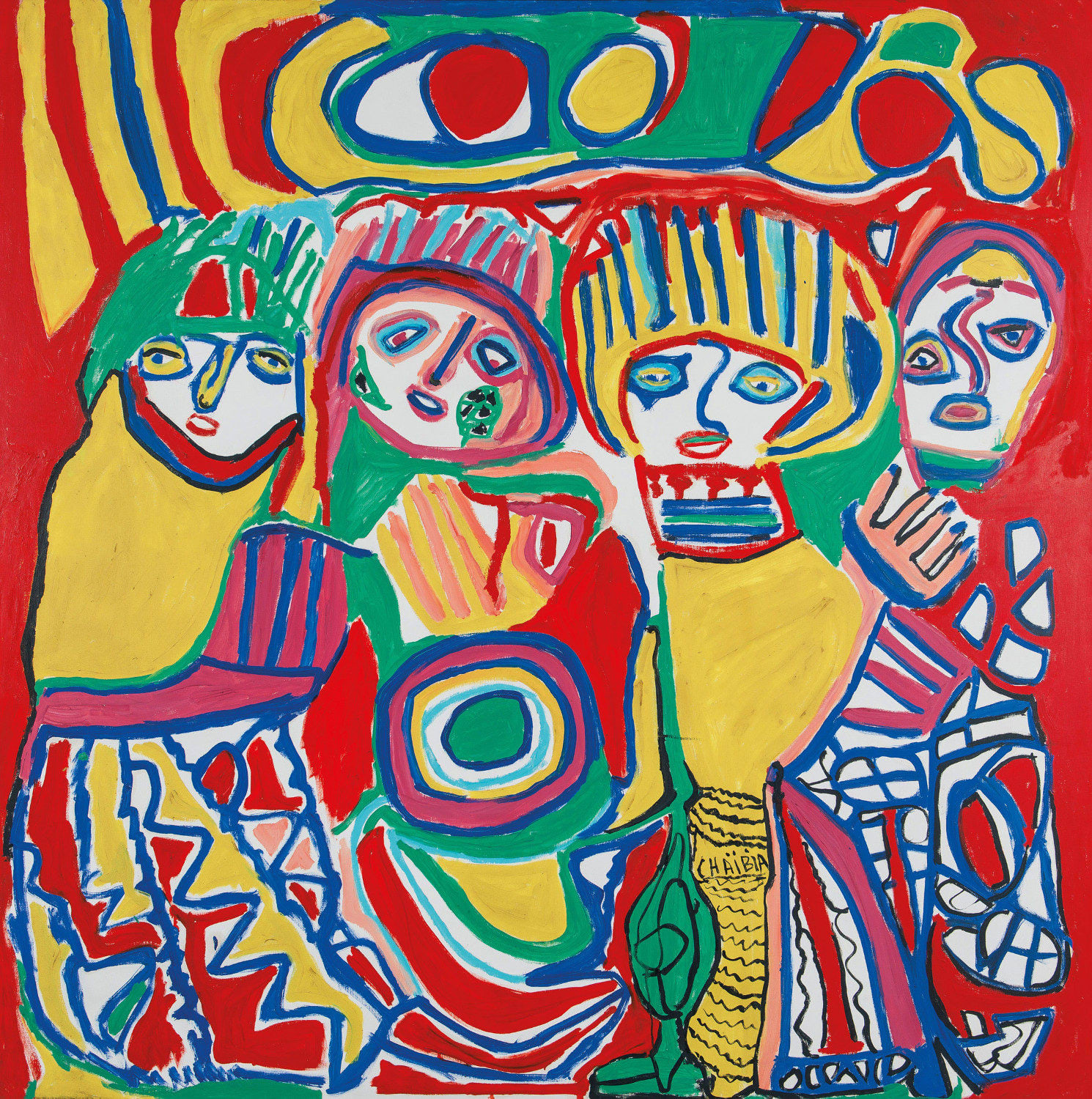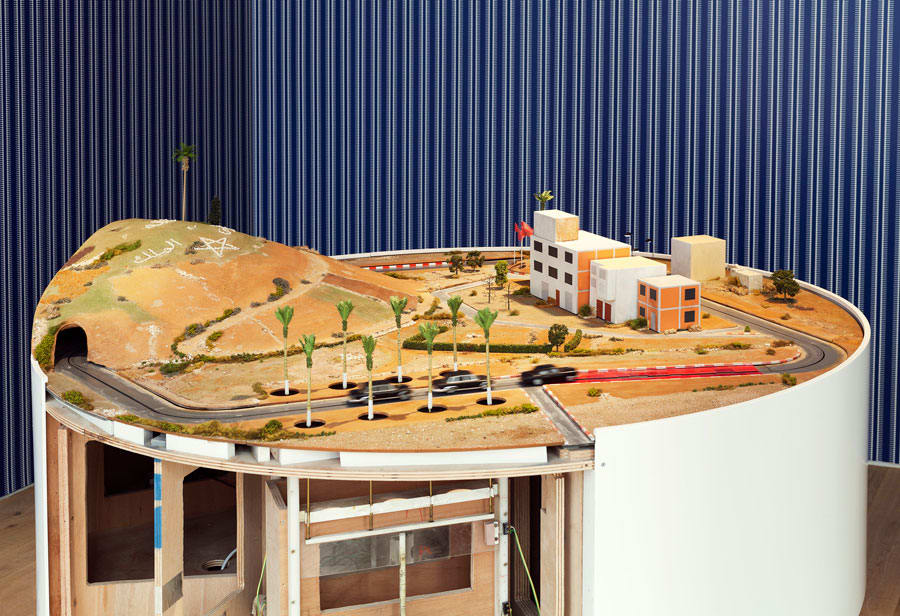
For Morocco, rich artistic heritage comes hand in hand with its traditional artisanship, colourful enclaves and impressively ornate architecture. In recent years, this creative identity has been added to by the growth of its contemporary art scene. Two major private institutions — Museum of African Contemporary Art Al Maaden (MACAAL) and Musée Yves Saint Laurent Marrakech — opened within two years of one another. Events like Marrakech Art Week and 1-54 Contemporary African Art Fair add to the growing excitement.
This roundup gathers together a list of artists from Morocco that is significant to the local scene and have made waves internationally. While many still live in Morocco, others work within the diaspora and present opportunities for international audiences to immerse themselves. Perhaps this roundup may even convince you to make plans to visit the country and discover the spaces and artists in the flourishing contemporary art scene.
1. Safaa Erruas
(Tétouan, 1976)
Safaa Erruas graduated from the Institute of Fine Arts, Tetouan. In her mid-career, she is one of the most prominent Moroccan artists of her generation. Erruas’ work, abstract works are often rendered in white — a deliberate constraint which symbolises immateriality, silence and fragility. Her work comprises works on paper and installations.
The materials used in her work are varied and highly referential — the recurrence of materials such as paper, cotton, gauze, metal needles and wire, and broken glass attempt to create suggestive forms to subvert domestic materials and delineate borders between the private and social spheres. But alternative readings are possible. In its abstraction, Erruas’ work has the aesthetic potential of being open to various interpretations.
Her work was featured in the Biennials of Rabat, Dakar, Havana, and Alexandria. It has been included in exhibitions around the world such as Institut du Monde Arabe, Palais de Tokyo, Sharjah Art Foundation and MOCADA.

Miradas, 2019, Metallic threads on canvas, 10 x 12cm. Image courtesy of Imago Mundi Collection.
2. Zakaria Ramhani
(Tangiers, 1983)
Zakaria Ramhani, who currently lives and works in Montreal, is best known for his large-scale paintings that use Arabic calligraphy as a formal gesture. Raised in an Islamic society, with a landscape painter for a father, aniconism informs the paradox in the artist's works. His fascination with portraiture is at odds with the practice of Islamic calligraphy, which has long been a revered art form for representing the divine. In his large-scale pieces, the calligraphy and text are as much formal gestures as linguistic content that alludes to political and art history. The nature of his work has landed him in controversy — his 2012 painting You Were My Only Love was censored by authorities at Art Dubai who did not approve of his depiction of police brutality in Cairo’s Tahrir Square.
In 2006, Ramhani became the youngest Moroccan citizen to be awarded a residency from the French government at the Cité Internationale des Arts in Paris. Since then, he has exhibited in Europe and the Middle East, including at the Barbican Centre in London, the Dak’Art Biennial of Contemporary African Art, the Cairo Biennale, and L’Institut du Monde Arabe in Paris.

Three Faces, 2021, Oil on canvas. Image courtesy of the artist
3. Hassan Hajjaj
(Larache, 1961)
Hassan Hajjaj is a contemporary Moroccan artist and filmmaker. He is perhaps best known for his photographs such as the series, Kesh Angels — the unique street culture of young female bikers in Marrakesh — and more recently portraits of celebrities such as Cardi B, Rez Ahmed and Lynette Yiadom-Boakye. Characterised by the bold colours and patterns of North African garb, Hajjaj's sitters borrow the distinct language and poses of fashion photography. Hajjaj’s work often gets compared to Pop Art but references to the classic studio work of Seydou Keïta, Sory Sanlé and Malick Sidibé are also a reference.
He currently lives and works between Marrakech and London. Today, Hajjaj’s works are held in the collections of the Brooklyn Museum, the Los Angeles County Museum of Art, the Victoria and Albert Museum in London, and the Guggenheim Abu Dhabi and the Museum of African Contemporary Art Al Maaden in Marrakesh.

M’s Back, 2012. Image courtesy of Hassan Hajjaj and The Third Line, Dubai
4. Chaïbia Talal
(El Jadida, 1929 - 2004)
Chaïbia Talal was a self-taught artist and arguably the most famous Moroccan painter of the 20th century. Talal's work is often likened to the works of the CoBRA — a European avant-garde movement active from 1948 to 1951. Her works often featured women, and her subject matter reflected Moroccan culture and the vibrancy of Moroccan life. Her naive style won her international recognition. Married at 14 and both a mother and widow at 15 this artist's rise is remarkable.
She began painting in 1963, and in 1965 her only son, Hossein, also a painter, invited the French art critic Pierre Gaudibert to their home. Impressed with her work, she quickly became internationally famous. By the following year Talal had solo shows at the Goethe-Institut in Casablanca, the Solstice Gallery in Paris, and the Salon des Surindépendants in the Museum of Modern Art in Paris.

Mon Village, Chtouka, 1990, oil on canvas, 190 x 191 cm. Image courtesy Sotheby’s.
5. Lalla Essaydi
(Marrakesh, 1956)
Through myriad media such as painting, video, film, installation, and photography Lalla Essaydi depicts Arab women and addresses the complex reality of Arab female identity from the unique perspective of personal experience. In much of her work, she returns to her Moroccan girlhood, looking back on it as an adult woman — the result is a dialogue juxtaposing past and present, as well as fantasy and reality.
Interested in the interaction between the female body and architectural spaces, Essaydi stages her models within existing architectural sites (with draped floss, mosaic, tile and Islamic architecture) or designs her own intricate sets. Her photography features Moroccan women laced in stereotypes and loaded imagery of Orientalist paintings by the likes of Jean-Léon Gérôme, Eugène Delacroix, and John Singer Sargent. She overlays the images with a loose illegible Arabic script written in henna—a reference to both the traditional male art of calligraphy and the traditionally female art of henna.
Her work has received worldwide critical acclaim, and is held and exhibited at institutions such as the National Museum of African Art in Washington, D.C. the Art Institute of Chicago, and the Fries Museum in the Netherlands.

Harem #12, 2009, chromogenic dye coupler print mounted to aluminium, 30 x 40 inch. Image courtesy Jackson Fine Art
6. Yto Barrada
(Paris, 1971)
Yto Barrada is a Franco-Moroccan multimedia visual artist living and working between Tangier and New York City. She studied history and political science at the Sorbonne and photography in New York. Her work — including photography, film, sculpture, prints and installations — began by exploring her hometown Tangier. Her work engages the fraught realities of identity and immigration as they define daily life in Tangier — a city poised on the western edge of the Strait of Gibraltar—the thin body of water separating Africa from Europe.
The artist has a complex oeuvre not only dealing with the Strait of Gibraltar but other subject matter such as archival practices and public interventions, dynamics of social relationships, subaltern histories, and border shapes.
Her work has been exhibited at Tate Modern, MoMA, The Renaissance Society, Witte de With, Haus der Kunst, Centre Pompidou, Whitechapel Gallery, and the 2007 and 2011 Venice Biennale.

Gran Royal Turismo, 2003, Installation. Image courtesy of Pace Gallery.
7. Latifa Echakhch
(El Khnansa, 1974)
Informed by how everyday objects and imagery can be transfigured into signifiers of identity, history, and mythology, Latifa Echakhch’s practice takes the form of painting, site-specific installation, sculpture, and sound. Through her work, the artist explores the everyday objects associated with Morocco and France and the preconceived cultural assumptions they evoke. Her work not only makes viewers reconsider their thoughts about cultural objects, but also reflects the fragility of modernism, migration, conflict, and memory.
Echakhch was born in Morocco and immigrated to France in her teens, and there she studied the École supérieure d'Art de Grenoble and graduated from the National School of Arts Cergy-Pontoise and the Lyon National School of Fine Arts. The artist started her career in 2002, gradually gained recognition, participated in the Venice Biennale in 2011, and won the Marcel Duchamp Prize in 2013.

La dépossession, 2014, Theatre canvas, painting, steel tube and straps. Image courtesy of the artist and kamel mennour, Paris / London ©
